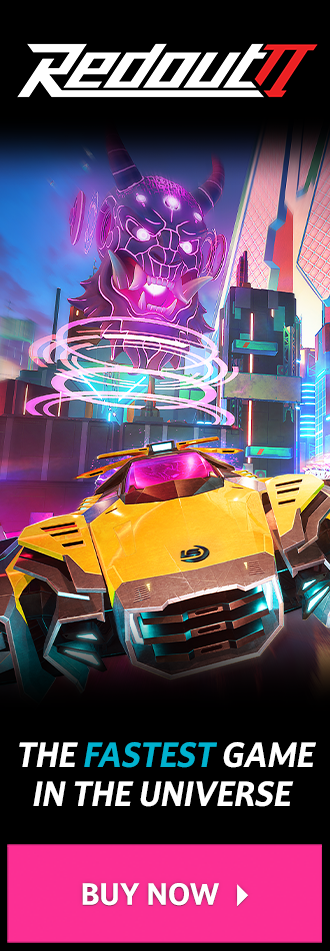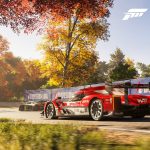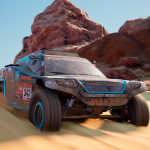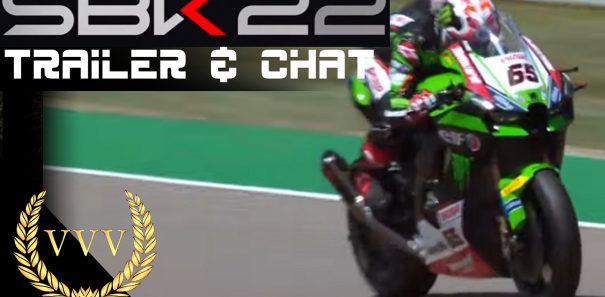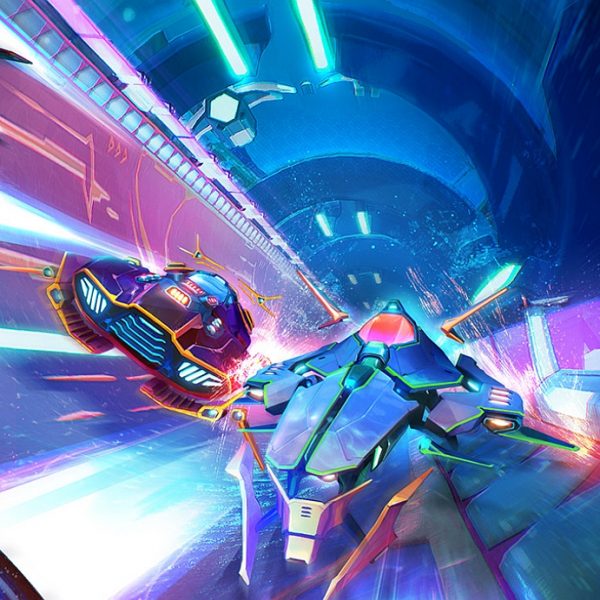Developed by the ex-Evolution Studios team (the same team that brought us Motorstorm and DriveClub) now working at Codemasters, Onrush is an arcade racer looking to stand out from a growing number of racing titles in recent years by completely removing the finish line.
That’s right, Codemasters is doing away with positions and podiums in favour of team and objective-based gameplay. Ripping up the traditional racing game rulebook like this certainly is a risky move. The success of Onrush, then, hinges on whether it can fill the void left by removing the thrill of battling for race positions and chasing the chequered flag.
Totally addicted to boost
As Onrush provides a departure from traditional racing, it perhaps isn’t surprising that proceedings kick off with a mandatory tutorial. Besides introducing the player to accelerating, braking, turning, and using boost, the tutorial acquaints you to the “fodder”- the simple-to-take-down AI opponents who exist purely to be wrecked for a quick boost top up. They’re appropriately named, then.
Besides taking out fodder, Boost can be earned by taking down human and AI opponents, completing jumps, performing stunts, missing objects by mere inches, and collecting “tombstones” dropped by wrecked opponents.
Boosting enables you to fill your rush meter. Once filled, unleashing rush gives you a greater and extended speed boost, allowing you to easily take out your foes. However, building a rush boost takes time (you may only receive one or two during an event), so you need to use it wisely.
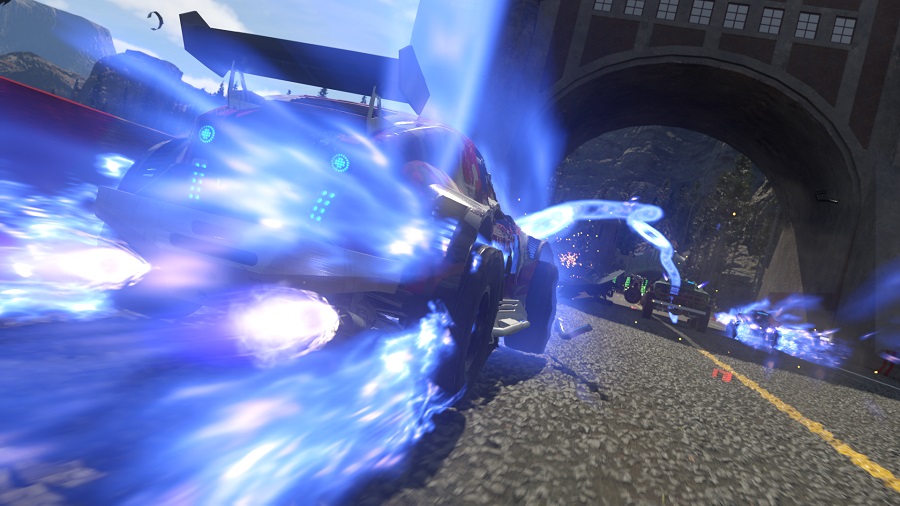
Onrush keeps you in the action at all times. The “stampede” of cars, which consist of orange and blue teams (you’re invariably the former like in Overwatch) and fodder vehicles, race along an endlessly looping track in close proximity as they crash and bash into each other, all while working with their respective teams to complete the given objective in pursuit of victory.
The game is so concerned with you being in this stampede of cars that it will physically teleport you back into the midst of the action, or in the case of the “switch” mode, take a life from you, so you better keep up with the herd.
Walk before you can rush
Onrush features four main game modes: Superstar, Quick Play, Ranked, and Custom Race. Quickplay and Ranked are your typical online modes, whereas Custom Game allows you to play at any track/vehicle/game mode combination along with the addition of several parameters, which can be altered to tailor the game to your preferences.
“Superstar” is undoubtedly the best mode to start your journey in Onrush. Acting as a relatively traditional racing game career mode with six main segments unlocked in sequence, it initially eases you into Onrush’s world by introducing each vehicle class and all four game modes in bite-sized portions to help familiarise you with the nuances found within the game.
Playing through the Superstar mode also allows you to level up and unlock gear crates, which can be opened to reveal additional vehicle shells, tombstones, bike tricks and additional character outfits. All of these items range in rarity so it’s always nice to obtain something that is particularly uncommon.
Onrush features four event types: Countdown tasks you to pass through gates to add time to your team’s clock (which is counting down, funnily enough); while Overdrive requires you to boost and rush to earn points for your team with a set point target to achieve. Lockdown sees you driving into moving circular zones as you compete with the opposing team to control them before moving on to the next one a few seconds later (although admittedly you’re never truly sure if you are about to start controlling a zone, and feels somewhat messy). Switch is my personal favourite, however: each player has three lives, and losing one forces you to switch vehicle class. Naturally, the team that runs out of all its lives loses.
As innovative as Onrush may sound, the event types are disappointing. Ultimately we’ve seen Countdown and Overdrive modes in other racing games albeit with some small changes, and Lockdown is essentially a modified version of something we’ve seen in Codemasters’ Micro Machines World Series. In truth, the only event type that feels truly engaging, and works best as a team-oriented experience is the Switch mode.
There’s a true feeling of tension when both teams are down to just a few lives in Switch that’s missing in other modes. Tracking down players who are fortunate (or should that be unfortunate) enough to have any remaining lives feels purposeful and witnessing half of a team trying their best to take down one opposing team member can make for some truly crazy and fun moments.
Once you’ve gotten to grips with Onrush’s event types and sampled each of its vehicle classes there really isn’t much to keep you invested in the Superstar mode. Playing online is unquestionably where Onrush shines best.

Putting it all on the online
Playing Onrush online ups the ante so much that going back to competing against AI feels lackluster by comparison. Human opponents are so much more aggressive and will inevitably go out of their way to take you down as they weave from side to side hoping to take out an opponent along the way.
Although you can take part in some satisfying team play with the more initiated of Onrushers, teammates are often more of a hindrance than a help. They often bash you out of the way and can be clueless about the best way to achieve objectives, which can be frustrating. Technically, events run generally smoothly and you’re never waiting too long between rounds, which is essential in an online-focused title like Onrush.
Onrush’s menus and presentation are of a good standard with clean looking menu backdrops offset with slightly nausea-inducing colour schemes. The various introductory videos are particularly well-presented and are well worth watching as they introduce you to each one of Onrush’s four event types, not to mention every vehicle class and its associated abilities.
Heroes in a full shell
There are eight vehicle classes in total, ranging from the reasonably fast and nimble bikes right up to the slower and heavier vehicles. Each class can be changed visually thanks to a plethora of different “shells”, all of which are very impressively detailed. As you can imagine, the heavier vehicles can dish out more punishment and withstand impacts compared to the more vulnerable bikes. However, any weight differences are offset with generally stronger abilities so that no particular class is obviously overpowered.
Choosing an effective vehicle for any of the four event types comes down to your playstyle. I found myself jotting down every vehicle’s abilities and then matching two to three of them to any game mode where I felt they would work best. After some time spent with each, I found my favourite for each event type.
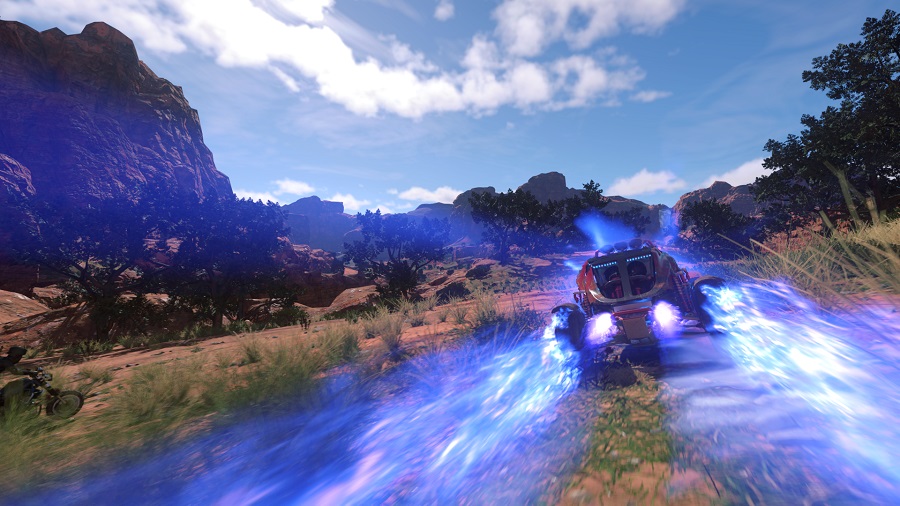
For example, the Dynamo vehicle class works well in Overdrive events as you can supply teammates with boost pickups, as well as obtain and provide boost to your teammates by driving next to them and rushing respectively, keeping everyone racing along at a rapid speed and clocking up those all important points as you inch toward triumph.
You really need to consider which vehicles will work well in any given mode and trial some vehicle classes to see which works best with your play style: If you believe that building your rush meter by performing flips is too risky a strategy then you’re better off choosing a different class.
Sadly, controlling vehicles in any one of Onrush’s eight classes feels uninspiring and fails to provide any satisfaction, which is hard to forgive considering gratifying vehicle handling should be the first box that is ticked in any racing game. Indeed, the physics of the vehicles feel more akin to futuristic anti-gravity craft than rugged off-road racers, which can feel jarring. While its accessibility may appeal to less experienced players, racing game veterans will be left wanting more depth. It’s also disappointing that are only two viewpoints – both from behind the car. A cockpit or bonnet camera would increase the intensity of the action.
Vehicle sounds also take a back seat to the music, which plays a large role and syncs with the on-screen action. Granted, you can turn off the music to hear the vehicle sounds, but in truth, you’re better off with the music as so much of Onrush’s character is lost without it.
Trees, trees everywhere
Onrush’s twelve environments (complete with different weather conditions and time-of-day variants) are visually impressive for the most part. Interestingly, they are predominantly unusually wide, presumably so that players can concentrate more on tactics and takedowns rather than racing line. That’s not necessarily a complaint with a racer as hectic as Onrush, but some tracks feature different routes. Don’t expect any true path splitting like in MotorStorm, however.
Highlights include “Glory Dam,” which sees you soaring through the air thanks to a conveniently placed ramp on a narrow bridge. You’ll also be hanging on for dear life as you negotiate a dam system. “Sanctuary Shore” has you racing through stunning water-soaked beaches and take on countless jumps, while racing through “Links Bay’s” golf course and baseball ground feels delightfully devilish, and the “Whitewater Canyon” features a beautiful canyon complete with waterfalls providing a good place to take a snap via Onrush’s photo mode, which incidentally includes the usual exposure, focus, and shutter speed settings as well as a range of cool filters.
Regrettably, most of the remaining locations are generic and forgettable and also suffer from repetitive themes. For instance, the arcade racer certainly has a love for woodland areas, which are repeated all too often.
Codemasters should be commended for taking a risk with Onrush, as doing away with the finishing line in a racing game is a very bold move. However, a lack of innovation with a small selection of event types, unsatisfying vehicle handling, and a mostly forgettable track roster takes the shine off this unusual racer.
It’s easy to imagine Onrush having a short shelf life, so the development team will need to periodically introduce new environments with additional challenges, or perhaps a new vehicle class to keep players invested and expand what is currently a fairly basic package. Right now, this makes paying the full price tag a particularly hard pill to swallow. As a result, you’re probably better off waiting for the price to drop, although it remains to be seen if there will still be a decently-sized online community by the time that happens.
Our Review
The good
- New and original concept
- 60 frames per second gameplay
The bad
- Too few event types
- Largely generic environments
- Unsatisfactory vehicle handling
- Not enough content for a full priced title
Summary
Codemasters should be commended for taking a risk with Onrush, as doing away with the finishing line in a racing game is a very bold move indeed. However, a lack of innovation with a small selection of event types, unsatisfying vehicle handling, and a mostly forgettable track roster takes the shine off this unusual racer. This makes paying for the full priced title at launch a particularly hard pill to swallow. As a result, you’re probably better off waiting for the price to drop, although it remains to be seen if there will still be a decently-sized online community by the time that happens.



